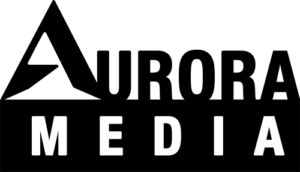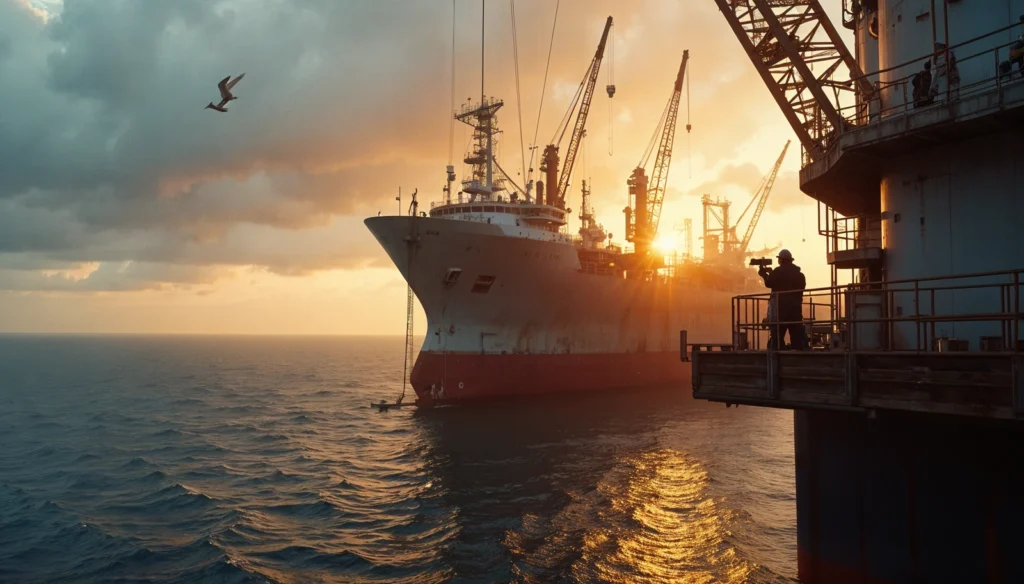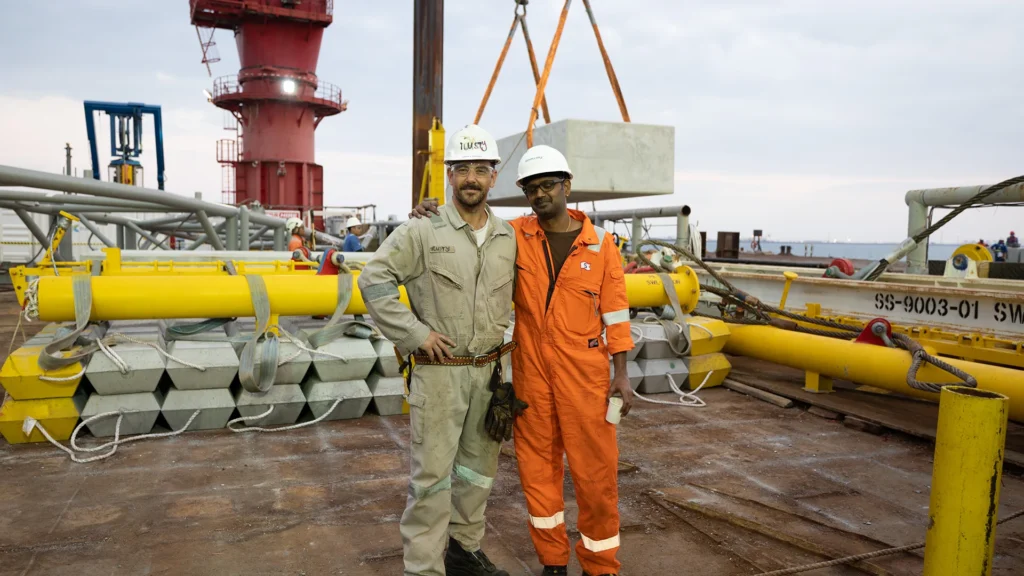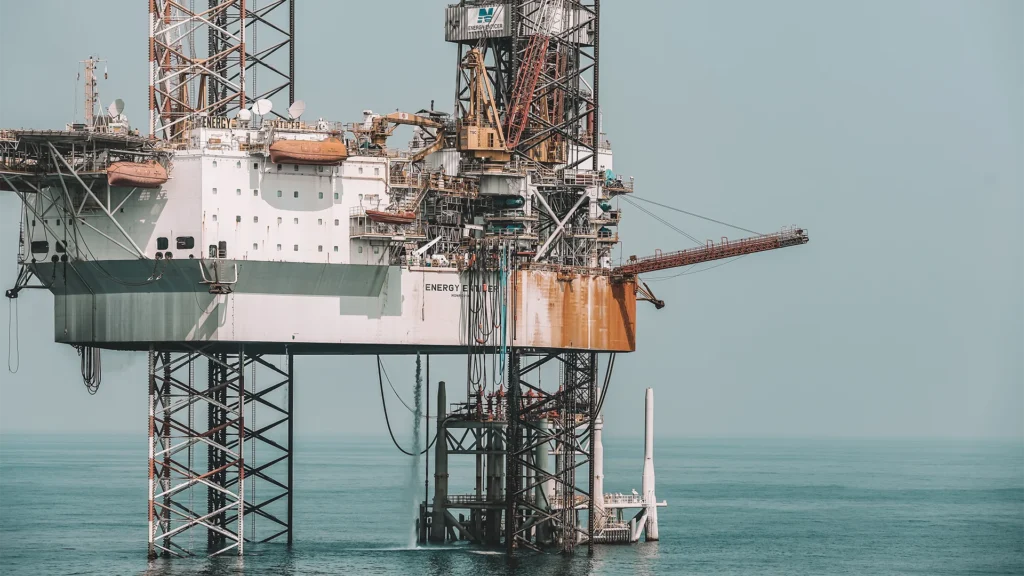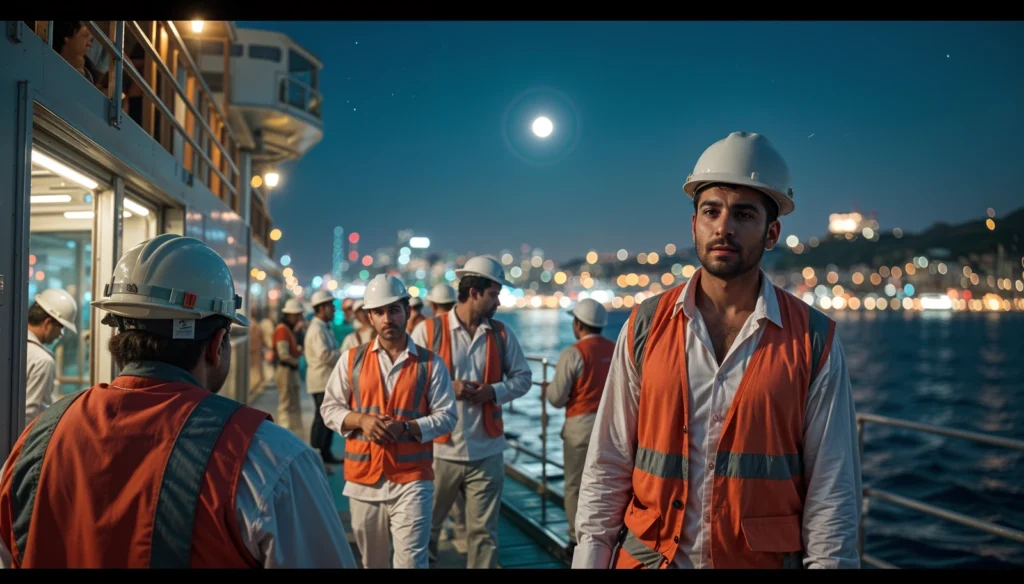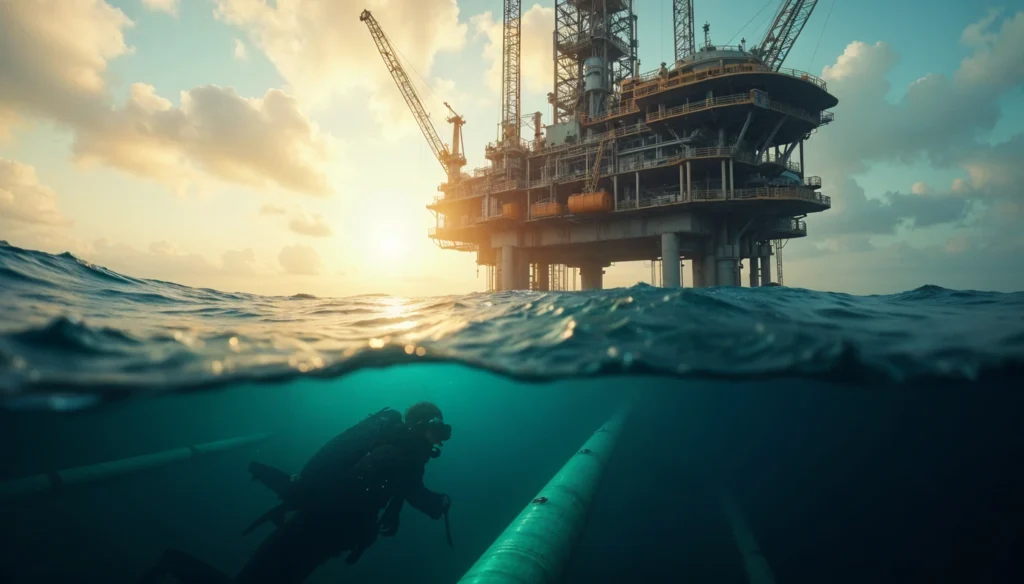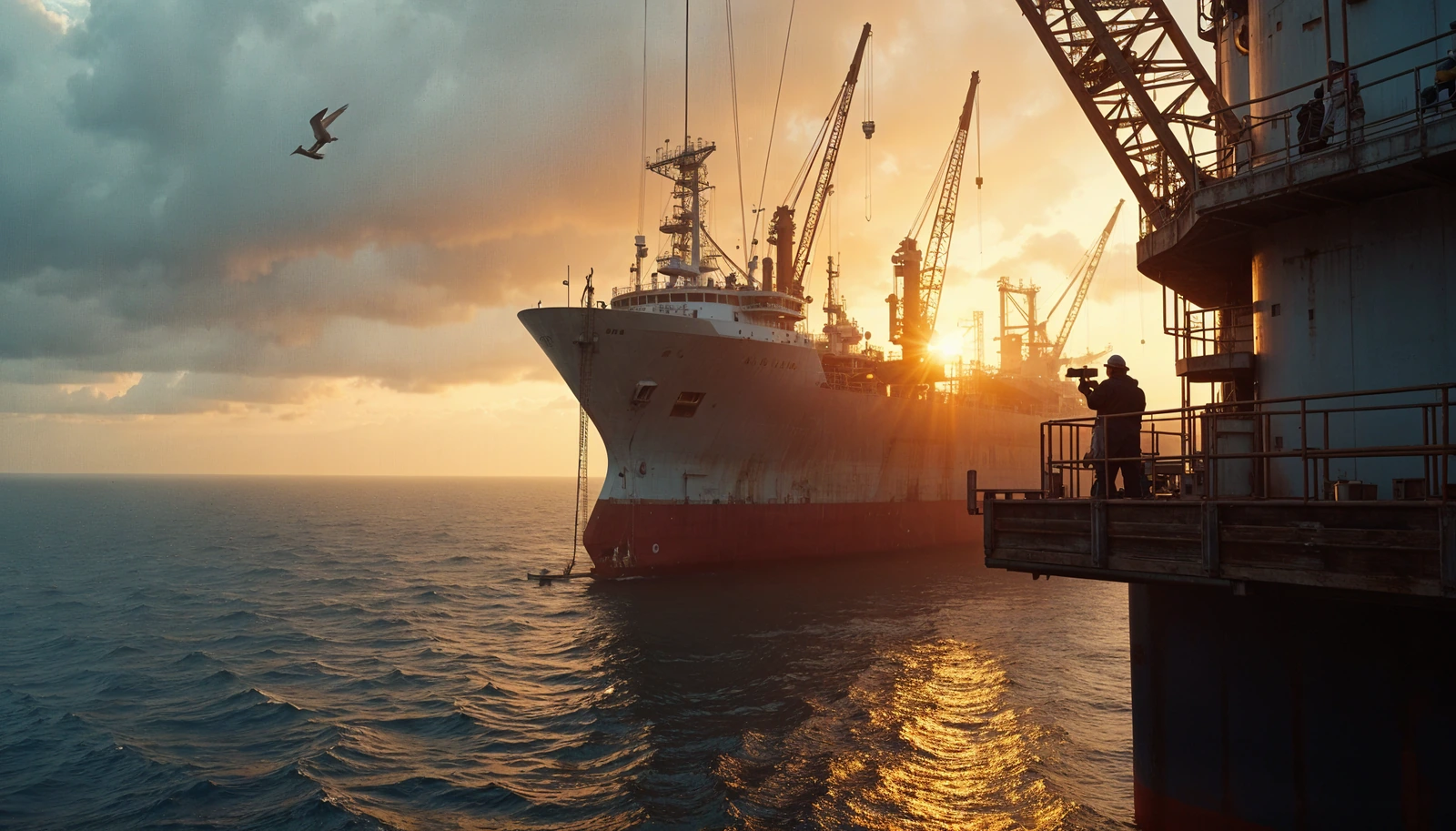In offshore environments, safety isn’t a slogan — it’s the culture. It’s how you start your shift. It’s how you walk across a deck. It’s how you speak to someone 30 meters above you in a basket lift. And for us, as a media crew embedded in high-risk zones, it’s also how we earn trust.
Because on these sites — oil platforms, wind farms, cable ships, or heavy-lift barges — we are guests. We don’t build. We don’t weld. We don’t operate cranes. But we are there, everywhere — with cameras, drones, microphones, and eyes wide open. And that means we must become part of the safety net, not a gap in it.
The Real Safety Briefing Happens in Silence
Yes, we attend inductions. We complete safety training. We study evacuation procedures. But true safety offshore is a language of its own. It’s built in nods, hand signals, knowing when to speak and when to step aside. It’s about learning to read the room when the room is made of steel and salt.
We’ve learned that earning a place on deck isn’t about paperwork — it’s about behavior. If the crane operator trusts you to move with awareness under a suspended load, he’ll let you film. If the deck foreman sees you pause at the red line without needing a reminder, you’re in.
And once that trust is established, communication becomes fluid. You’re not just filming — you’re collaborating. The welder lets you shoot up close. The medic shares insights during night shifts. The HSE officer starts calling you by name.
When the Camera Takes a Backseat
We’ve shut down shoots mid-scene because someone’s lanyard wasn’t clipped. We’ve missed “perfect” sunrise shots because a foghorn meant shifting locations. We’ve spent hours adjusting drone routes because a technician was working just outside our frame.
And that’s fine. Safety isn’t the enemy of creativity — it’s the frame it lives within.
We don’t take risks for footage. We prepare so we don’t have to.
That means double-checking harnesses before shooting on helidecks. That means requesting a spotter when operating close to live lifts. That means knowing the safety signals for every vessel we board — and sometimes teaching our own team the local language or dialect just to make sure nothing is misunderstood.
Building Psychological Safety Too
There’s another kind of safety we’ve come to value: the human kind.
In offshore life, people are far from home. Long shifts. Tight quarters. Physical labor. Cultural barriers. It can be tense — especially when cameras enter the space.
That’s why our approach isn’t just technical — it’s relational.
We brief crews in advance. We explain what we’ll film and when. We ask, not assume. We let people say no. We blur faces when needed. And sometimes we simply put the camera down to have coffee with the team. That’s where the real access starts — not through credentials, but connection.
Cinematic — But Never at the Cost of Safety
Yes, we aim for beautiful shots. We fly drones at golden hour. We film silhouettes against flare stacks and turbine blades. But we never compromise safety for style.
The real story is in how people work together in environments that test every instinct. That balance of tension and trust — that’s the most cinematic thing of all.
Because offshore, there’s no “take two.” There’s only doing it right the first time — and watching out for each other, every step of the way.
